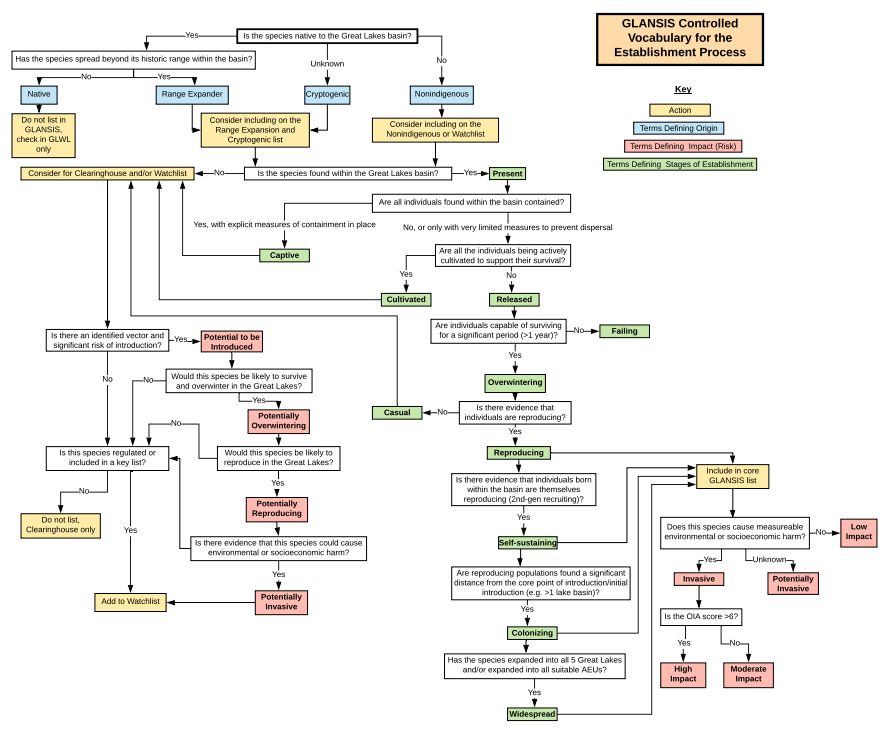Alien language: Using controlled vocabulary to talk about invasive species
Part 3: Researchers can use different words to refer to the same phenomenon; agreed-upon definitions can help.

It can be surprisingly difficult to talk about invasive species -- not because there’s any shortage of important topics to discuss, but because the vocabulary shaping these discussions among scientists, environmental managers, and the public is often inconsistent. Even in conversations between invasion biologists, researchers can use different words to refer to the same phenomenon, or have different definitions of the same technical term -- including the word ‘invasive’ itself.
Inconsistent usage
Although widely used, the term 'invasive' is vague and subject to widely inconsistent usage. Biologically, it is often related to the relative ability of a species to spread and establish in new areas, but legislatively and politically it is used to characterize a nonindigenous species "whose introduction does or is likely to cause economic or environmental harm or harm to human health" (U.S. Executive Order 13112, February 1999). As a result, the term 'invasive' has multiple meanings and requires a subjective judgment, which presents challenges for consistent, clear science communication.
For instance, the Great Lakes Aquatic Nonindigenous Species Information System (GLANSIS) database exclusively uses the term ‘invasive’ when a species meets all of the criteria for the database’s nonindigenous list (summarized in the figure, full text available at https://www.glerl.noaa.gov/glansis/criteria.html) and has significant, synonym demonstrable, realized environmental or socioeconomic impact to the Great Lakes.
Likewise, the word 'exotic' is a commonly used for 'nonindigenous', but the GLANSIS team limits the use of this term solely to species that have demonstrable environmental or socioeconomic benefits to the Great Lakes.
While there will likely never be widespread consensus on how language use in invasion biology could and should be standardized, using a controlled vocabulary -- a set of terms with clear, standardized, consistent definitions -- helps users more effectively navigate the GLANSIS database and avoid confusion. These include the terminology used at each stage of the process through which an introduced aquatic species becomes established in the Great Lakes region.
Vocabulary flow chart
For example, historically, GLANSIS used the term ‘established’ as synonymous with ‘reproducing and overwintering’. However, the term ‘established’ has recently taken on a connotation of ‘permanence’ in management discussions, and divergent definitions are rapidly arising. To provide more clarity and avoid confusion, GLANSIS has transitioned to a more nuanced approach in the use of the word ‘establishment’ in our discussion of a species’ status in the Great Lakes over the past year. We now use the terminology appearing in green on the vocabulary flow chart shown below (click the link for a higher-resolution image), reserving the term 'establishment' to refer to the entire process.

The terms in this chart are based in a framework proposed in a recent paper by Kocovsky et al (2018), and are consistent with Darwin Core, a standardized glossary of terms used to facilitate the sharing of information about biological diversity. In this framework, ‘establishment’ is understood as an overarching process, with the more specific language for its various stages (survival, reproduction, dispersal, etc.) clarified where available. With a clearer set of operational definitions for each stage of invasion, it is the GLANSIS team’s hope that it will be easier to have these important conversations about Great Lakes invasive species with different partners while ensuring that everyone remains on the same page.
Michigan Sea Grant helps to foster economic growth and protect Michigan’s coastal, Great Lakes resources through education, research and outreach. A collaborative effort of the University of Michigan and Michigan State University and its MSU Extension, Michigan Sea Grant is part of the NOAA-National Sea Grant network of 34 university-based programs.
This article was prepared by Michigan Sea Grant Extension under award NA17OAR4320152 from the National Oceanic and Atmospheric Administration, U.S. Department of Commerce through the Regents of the University of Michigan. The statements, findings, conclusions, and recommendations are those of the author(s) and do not necessarily reflect the views of the National Oceanic and Atmospheric Administration, the Department of Commerce, or the Regents of the University of Michigan. This project was also supported by the Great Lakes Restoration Initiative.



 Print
Print Email
Email

